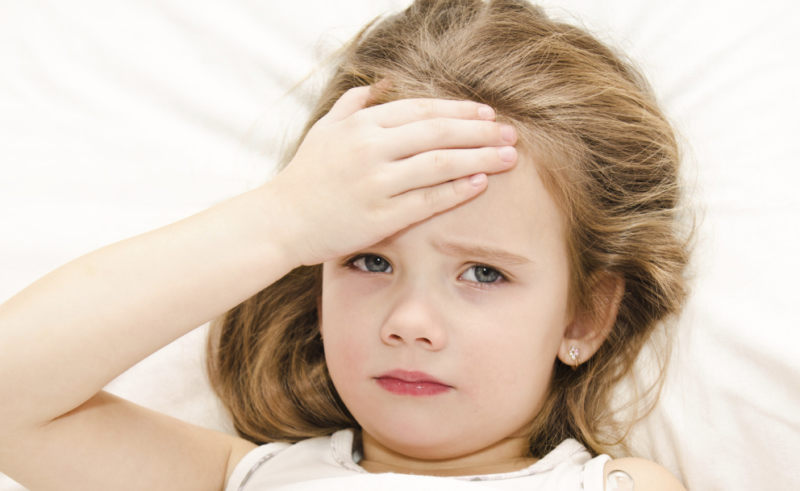Every adult should know what meningitis is and why it appears. This is necessary in order to protect yourself and loved ones from this serious pathology, and also, if necessary, be able to provide medical care.
Material Content:
What is meningitis
Meningitis is a dangerous disease that causes inflammation of the spinal cord and brain (soft, hard and arachnoid membrane). It can develop both independently and as a result of another disease. There are two types of pathology: leptomeningitis and pachymeningitis. In the first case, the inflammatory process extends to the soft and spider layer, in the second - to the hard.
Also, this disease is divided into types, depending on what it is caused by:
- meningococcal meningitis;
- pneumococcal meningitis;
- haemophilus influenzae meningitis;
- fungal meningitis;
- serous meningitis (viral meningitis, tuberculous meningitis);
- mixed meningitis.
Serous meningitis is more threatening, since in this case lymphocytes predominate in the brain fluid. According to the prevalence of inflammation, the disease is divided into local and ubiquitous. The nature of the pathology can speak of serous or purulent inflammation.
This problem can occur in both adults and children. At an early age, the risk of the appearance of precisely bacterial, viral and streptococcal meningitis is more likely.
Causes
Bacterial and viral infections are the root cause of meningitis.
As pathogens, bacteria such as:
- pneumococci;
- meningococci;
- enteroviruses;
- amoeba;
- hemophilic bacillus (type b);
- streptococcal bacteria (belonging to group b);
- E. coli;
- tuberculosis microbacteria.
For children, infection by inhalation of harmful bacteria (airborne droplets) can come out through infection. In more rare cases, there is the likelihood of transmission of infections from mother to child in the birth process. In adulthood, the cause of meningitis can be unsanitary conditions (dirty water, unwashed food) or infection through contact with rodents, insects and other animals. If we talk about non-infectious meningitis, then it acts as a consequence of tumors and injuries of the skull.
Incubation period
The incubation period of the disease (latent period) is the time period that is measured from the moment the harmful agent enters the human body until the first alarming symptoms appear.
The rate of development of the disease depends on three factors:
- amount of pathogens;
- their activity;
- immunity of the infected.
Once in a suitable environment, microbes begin to multiply rapidly. At that moment when the immune system is no longer able to deal with the problem, negative symptoms appear.
The incubation period for each type of disease such as meningitis is different. In some cases, viruses begin to cause serious damage to health quickly enough. So, viral meningitis develops in such terms: in adults over 4 days, in children over 3. There are cases when the incubation period of microorganisms ranged from 2 to 18 days.
How to recognize an ailment by the first signs
In the early days of the onset of the disease, it is important to understand how to recognize meningitis. The first signs appear within a couple of days after infection.
As a rule, the following symptoms appear in patients:
- severe and sharp headache;
- chills;
- photophobia;
- vomiting, indigestion;
- drowsiness;
- weakness of the body as a whole;
- loose stools;
- increased body temperature (can reach 39 - 40 ° C);
- dense fullness throughout the body (occurs after 6 - 16 hours);
- pain in the limbs;
- increased thirst;
- decreased appetite;
- backache.
Such changes in behavior and well-being should cause extreme alertness. If at least a few points have occurred, then you need to immediately contact a qualified doctor to examine and identify their root cause.
Symptoms and clinical presentation
With a neglect of the first symptoms of meningitis, further manifestations of the disease may occur. They will already be more serious.
These negative changes include:
- conjunctivitis (inflammation of the mucous membrane of the eyes);
- cramps
- confusion and loss of consciousness;
- muscle neck stiffness (increased tone);
- irritability;
- runny nose
- rave;
- low blood pressure;
- tachycardia (increased heart rate);
- coughing;
- shortness of breath;
- inflammatory processes in the throat;
- a fontanel may swell in an infant.
The above symptoms indicate a critical situation. If prompt and effective medical care is not provided, there is a risk of death.
Diagnostic measures
In order to avoid complications, with meningitis an immediate qualitative diagnosis is required. It includes several important steps.
The initial diagnosis is made if there are three factors:
- intoxication syndrome;
- shell symptom complex;
- cerebrospinal fluid change syndrome.
To detect such changes, lumbar puncture is mandatory (insertion of a puncture needle into the spinal cord to obtain fluid samples).Based on the substance obtained, a survey is carried out that gives an accurate answer about the presence or absence of meningitis. Mainly, this procedure shows the ratio of cells, the number of neurophiles, lymphocytes, high protein content, glucose level.
In parallel with this, a general and biochemical analysis of blood, urine, bacteriological culture, computed tomography and magnetic resonance imaging, PRC (polymer chain reaction) are carried out. If there are symptoms, a neurologist may also be examined.
Treatment of meningitis in children and adults
Meningitis in adults, just like meningitis in children, has very serious consequences, so treating it at home, including folk remedies, is categorically not recommended!
The patient will need immediate hospitalization and the intervention of certified doctors. Otherwise, the situation threatens to quickly become critical, cause serious damage to health or even lead to death.
The treatment of this complex disease is carried out exclusively in an emergency hospital and includes such measures:
- hormonal (steroid) therapy;
- antiviral drugs, antibiotics;
- antipyretic drugs (when the temperature reaches at least 38 ° C);
- diuretics (to remove fluid from the brain);
- drug reduction of intoxication of the body;
- increase immunity and overall body resistance with the help of B and C vitamins;
- reducing the pressure of the cerebrospinal fluid using its intake with a special needle.
Proper sequential treatment significantly increases the chances of an early recovery.
The consequences of a viral disease
In some cases, the consequences of viral meningitis are due to the inability to eliminate all the negative reactions caused by the influence of meningococcus and other bacteria on the human brain.
Among the common phenomena are observed:
- strabismus;
- decreased vision and hearing;
- asthenic syndrome (persistent weakness, headache, lethargy);
- hypertension syndrome (increased cerebrospinal fluid pressure in the cranium);
- convulsive syndrome.
Due to the release of a large number of toxins by microorganisms, a state of infectious toxic shock can be fatal to the human body. At the same time, blood pressure drops, the heart rate quickens, the work of all organs is disrupted.
A separate place should be allocated to such a terrible consequence of meningitis as epilepsy.
Recovery Forecasts
Inflammation of the meninges is a dangerous phenomenon. By and large, the outcome depends on three such factors as the timeliness of hospitalization, the correctness of the prescribed treatment and the degree of effectiveness of the human immune system.
If we talk about more specific indicators, then the mortality rate for meningitis is as follows:
- meningococcal meningitis - 50%;
- pneumococcal meningitis - 15 - 25%;
- Hemophilus influenzae meningitis - 30 - 35%;
- viral meningitis - 10%;
- tuberculous meningitis - 15 - 25%.
It is worth noting that mortality among children is higher. This is especially due to the fact that at a young age the immune system is still very weak, not fully formed (especially up to 5 years). Therefore, infants, children of primary and preschool age are at risk.
Prevention
To avoid becoming a victim of meningitis, follow special methods for its prevention and prevention.
- It is worth reducing the stay in crowded places with poor ventilation. This is especially true during the period of viral infection epidemics.
- Monitor the temperature regime on the street, dress according to the weather, do not overcool and do not overheat.
- Wash hands as often as possible. Upon returning from the street and after contact with animals, this measure is mandatory.
- Adhere to a healthy lifestyle, monitor the quality of food, play sports, take vitamins to increase immunity.
- After contact with a sick person, contact a medical institution for a preventive course of therapy.
- Carry out wet cleaning in the house.
- Refuse swimming in stagnant waters.
- Make the necessary vaccinations (including from meningoencephalitis).
Meningitis is a serious but treatable disease. Subject to all the rules and recommendations, you can count on a positive result.


















